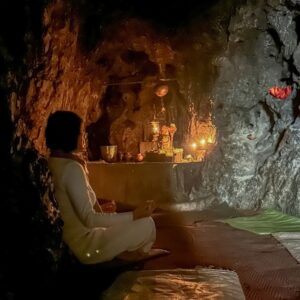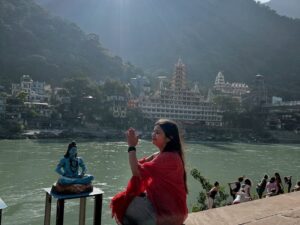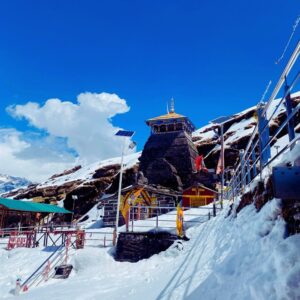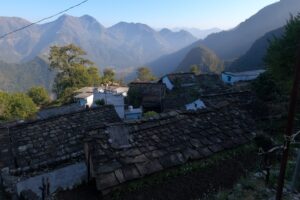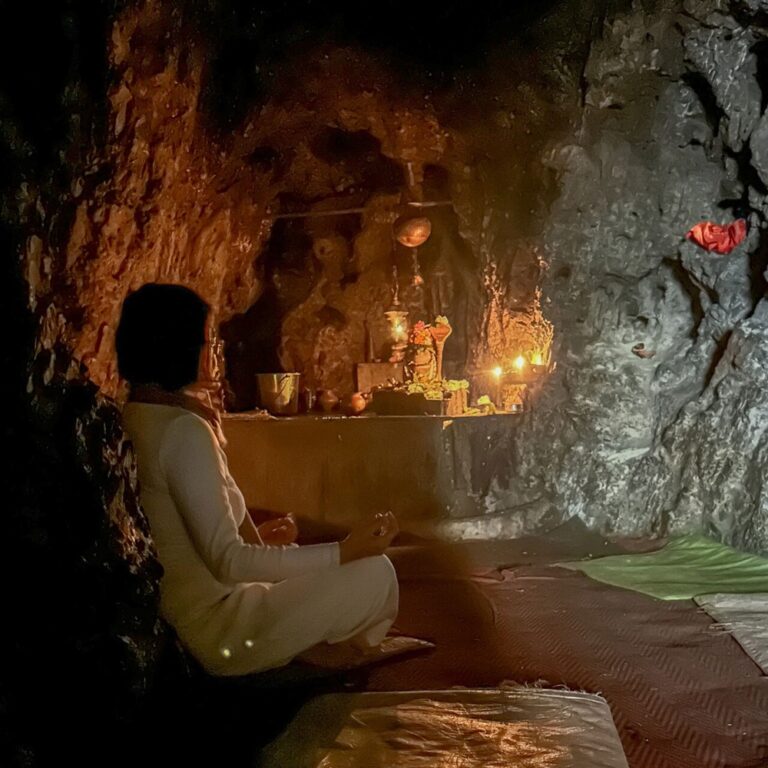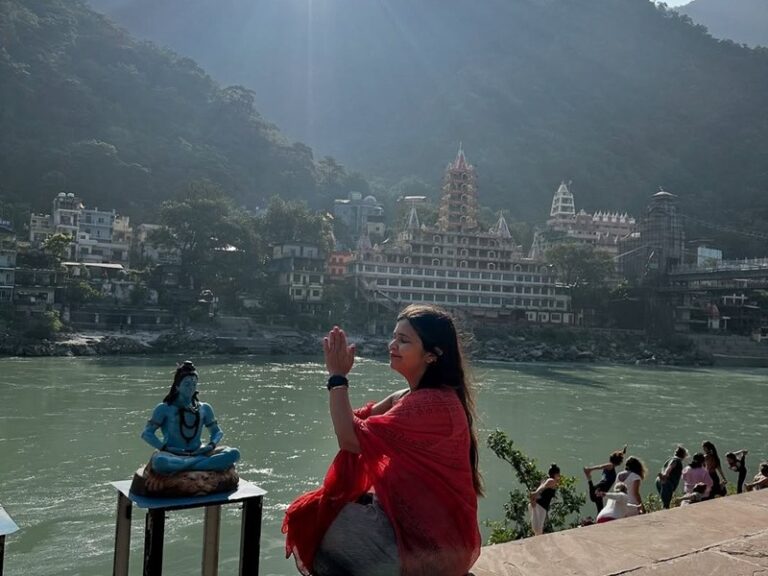Discover Badrinath Uttarakhand India | Temple, Temperature, Weather
Shri Badrinath Dham, located in the Chamoli district of Uttarakhand, lies amidst the snow-clad Himalayan ranges. It is mentioned in the Skanda Purana, Kedarkhand, and Shrimad Bhagavatam.
According to mythological belief, Lord Vishnu incarnated as Nara-Narayana, the sons of Dharma and Mata Murti, and performed penance here for the welfare of the world.
The Badrinath Temple, situated on the right bank of the Alaknanda River, houses a self-manifested Shaligram idol of Lord Badrinath in meditative posture.
Idol of Narayana
The idol of Narayana, in Padmasana and four-armed form, is said to be eternal and divine, giving devotees visions of their chosen deities. Followers of Hinduism, Buddhism, Jainism, and Sikhism all visit the shrine.
The name Badrinath comes from a legend — when Lord Vishnu performed penance here, Goddess Lakshmi took the form of a Badri tree to protect him from the cold, thus the place became known as Badrinath (the Lord of Badri).
In Satyuga
In Satyuga, it was known as Muktiprada; in Tretayuga, Yogasiddhida; in Dwaparyuga, Vishala; and in Kaliyuga, Badarikashram. Before leaving the region, Lord Vishnu promised to remain spiritually present in the Narad Kund, where his divine idol was later retrieved and installed by the gods.
Even today, during summer, humans perform worship, while in winter, when the temple closes, Devarshi Narada is believed to perform the rituals, and the eternal flame (Akhanda Jyoti) continues to burn.
The Dharmashila, Mata Murti Temple, Nara-Narayana Mountains, and Sheshnetra Lakes in Badarikashram are linked to the legend of Sahasrakavacha’s destruction. Rishi Ved Vyas composed the Puranas in a nearby Vyas Cave.
During later times, Buddhist influence spread, and priests hid the idol in Narad Kund to protect it. Adi Shankaracharya, an incarnation of Lord Shiva, rediscovered and reinstalled the idol at its original place, reestablishing Badrinath as a major Hindu pilgrimage site.
Adi Shankaracharya
Adi Shankaracharya also founded the Jyotir Peeth at Joshimath and stayed in the Vyas Cave for four years, composing commentaries on the Brahma Sutras, Gita, and Upanishads. He established Badrinath as one of the Char Dhams—along with Dwarka, Jagannath Puri, and Rameshwaram—symbolizing India’s cultural unity.
Since his time, the temple’s worship follows Vaishnava traditions, conducted by Rawal priests, who are Namboodiri Brahmins from South India’s Malabar region.
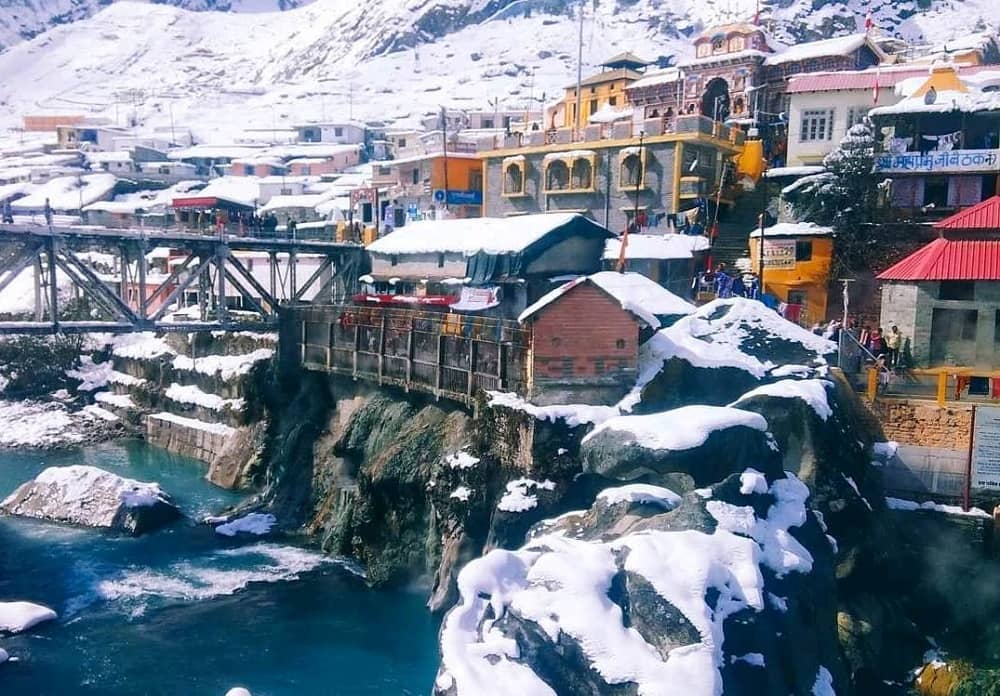
There is also a mythological story behind why this shrine is called Badrinath. After the destruction of the demon Sahasrakavacha, when Lord Vishnu appeared as child Nar-Narayan, Goddess Lakshmi incarnated as a Badri tree (Jujube tree) to protect her husband from cold, rain, storm, and snow, covering Lord Narayan from all sides.
The Badri tree thus gave the shrine its name — Badrinath, meaning the Lord (Nath) of Badri.
In South India, as an incarnation of Lord Shiva, Jagadguru Adi Shankaracharya was born. At the age of eleven, he reached Badrinath via Joshimath and, upon finding the temple empty, realized through divine insight that the idol of Lord Vishnu was lying in the Narad Kund.
He himself descended into the Narad Kund and recovered the black stone idol. Initially, he doubted that it could be Lord Vishnu’s idol and returned it to the water, but every time he dived in, the same idol reappeared in his hands, confirming its divinity. Adi Shankaracharya then reinstalled the idol in the center of the Bhairavi Chakra, where it stands today.
It is also believed that Adi Guru Shankaracharya restored the Badrinath Temple and established the Jyotir Peeth at Joshimath after performing penance there. Near Badrinath, in the Vyas Cave, he spent four years composing commentaries on the Brahma Sutras, Bhagavad Gita, Upanishads, and Sanatsujatiya.
As an incarnation of Lord Shiva, Jagadguru Shankaracharya reorganized the management of Hindu temples in this region and established Shri Badrinath as the foremost among India’s four Dhams, associating it with Dwarka, Jagannath Puri, and Rameshwaram. These Char Dhams hold immense cultural and national significance even today.
Since the time of Shankaracharya, Lord Vishnu has been worshipped here as the presiding deity of this holy tirtha, with daily rituals following the pure Vaishnava tradition.
The chief priest (Rawal) of Shri Badrinath Temple is always a highly learned Namboodiri Brahmin from the Malabar region of South India, descending from Adi Shankaracharya’s lineage. Worship in Shri Badrinath continues to be performed according to Vaishnava customs.
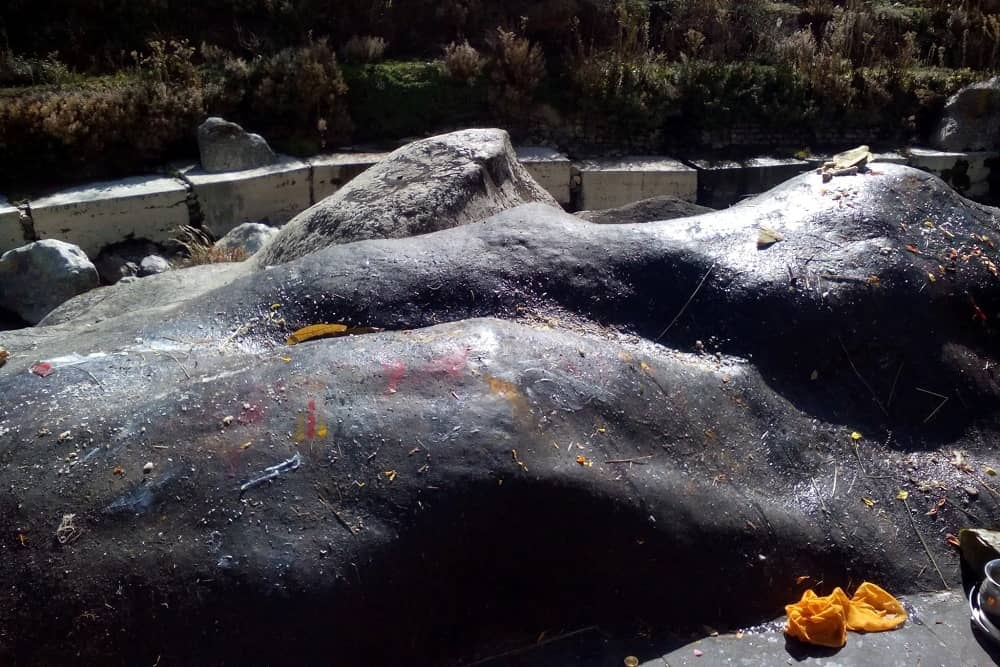
Badrinath Weather and Temperature Details
Winter (October to April)
During winter, the days are cold, and the minimum temperature can fall below freezing point, with snowfall being very common.
Travelers are advised to carry adequate winter gear to protect themselves from the cold during this period.
Summer (May to June)
Summer months (May to June) have a moderately cool and pleasant climate.
It is the best time for sightseeing and the Badrinath pilgrimage.
Monsoon (July to Mid-September)
The monsoon season (July to mid-September) brings frequent rainfall and a drop in temperature.
Travelers are advised to check the road conditions between Rishikesh and Badrinath before starting their journey.
The Badrinath Temple remains open for devotees from April/May to November every year.
| Month | Minimum Temperature | Maximum Temperature | Weather |
|---|---|---|---|
| January | 1°C | 8°C | Snowfall |
| February | 6°C | 10°C | Snowfall |
| March | 3°C | 11°C | Snowfall |
| April | 6°C | 16°C | Snowfall |
| May | 11°C | 22°C | Sunny |
| June | 9°C | 16°C | Sunny |
| July | 11°C | 14°C | Rainy |
| August | 12°C | 16°C | Rainy |
| September | 11°C | 14°C | Sunny |
| October | 12°C | 17°C | Chance of Snowfall |
| November | 6°C | 14°C | Snowfall |
| December | 5°C | 12°C | Snowfall |

How To Reach Badrinath Uttarakhand India
By Air:
Jolly Grant Airport (35 km from Dehradun) is the nearest airport to Badrinath, located about 314 km away.
The Jolly Grant Airport is well connected with Delhi and other major cities of India through daily flights.
Badrinath is connected by motorable roads from Jolly Grant Airport, and taxis/buses are easily available from Rishikesh or Haridwar to reach Badrinath.
By Rail:
The nearest railway station to Badrinath is Rishikesh, situated on National Highway 58, about 295 km before Badrinath.
Rishikesh/Haridwar are well connected to major destinations in India through the railway network.
Badrinath is also connected by road to Rishikesh/Haridwar.
Taxis and buses to Gaurikund are available from Rishikesh, Srinagar, Rudraprayag, Tehri, and several other destinations.
By Road:
Badrinath is well connected by motorable roads to major towns of Uttarakhand.
From ISBT Kashmiri Gate, New Delhi, buses are available to Haridwar, Rishikesh, Dehradun, and Srinagar (Garhwal).
Buses and taxis to Badrinath are easily available from Dehradun, Haridwar, Rishikesh, Pauri, Rudraprayag, Tehri, and other major towns.
Gaurikund is connected to Ghaziabad via National Highway 58.
Road Routes to Badrinath
Route 1: Kedarnath to Badrinath (247 km)
Kedarnath – (14 km trek) Gaurikund – (5 km) Sonprayag – (4 km) Rampur – (9 km) Phata – (14 km) Guptkashi – (7 km) Kund – (19 km) Agastyamuni – (8 km) Tilwara – (8 km) Rudraprayag – (20 km) Gauchar – (12 km) Karnaprayag – (20 km) Nandprayag – (11 km) Chamoli – (8 km) Birahi – (9 km) Pipalkoti – (5 km) Garur Ganga – (15 km) Helang – (14 km) Joshimath – (13 km) Vishnuprayag – (8 km) Govindghat – (3 km) Pandukeshwar – (10 km) Hanuman Chatti – (11 km) Shri Badrinath.
Route 2: Kedarnath to Badrinath (229 km)
Via Guptkashi – Ukhimath – Chopta – Gopeshwar – Chamoli – Pipalkoti
Kedarnath to Kund (53 km) – (6 km) Ukhimath – (22 km) Dugalbhitta – (7 km) Chopta – (27 km) Mandal – (8 km) Gopeshwar – (10 km) Chamoli – from Chamoli to Badrinath (96 km).
Route 3: Haridwar/Rishikesh to Badrinath (324 km)
Rishikesh to Badrinath (298 km)
Haridwar – (24 km) Rishikesh – (71 km) Devprayag – (30 km) Kirtinagar – (4 km) Srinagar – (34 km) Rudraprayag – (20 km) Gauchar – (12 km) Karnaprayag – (20 km) Nandprayag – (11 km) Chamoli – (8 km) Birahi – (9 km) Pipalkoti – (5 km) Garur Ganga – (15 km) Helang – (14 km) Joshimath – (13 km) Vishnuprayag – (8 km) Govindghat – (3 km) Pandukeshwar – (10 km) Hanuman Chatti – (11 km) Shri Badrinath Ji.
.

| Place Name | Description (Short Summary) | Distance from Badrinath Temple |
|---|---|---|
| Narad Shila | Sage Narad Ji performed penance standing on one leg for sixty thousand years here. | 0 km |
| Markandeya Shila | After listening to Narad Ji’s penance results, Sage Markandeya meditated here. | 0 km |
| Barahi Shila | Related to Hiranyaksha, who once took the Earth (Prithvi) to the Rasatal (netherworld). | 0 km |
| Garud Shila | Garuda Ji performed penance for thirty thousand years on this sacred rock. | 0 km |
| Narasimha Shila | Associated with Lord Narasimha, who killed demon king Hiranyakashyap here. | 0 km |
| Kund Name | Description (Short Summary) | Distance from Badrinath Temple |
|---|---|---|
| Tapt Kund | As the name suggests, a natural hot water spring, considered spiritually purifying. | 0 km |
| Narad Kund | A holy pond located in Badrikashram, where Lord Vishnu’s idol was discovered by Adi Shankaracharya. | 0.5 km / 4 mins |
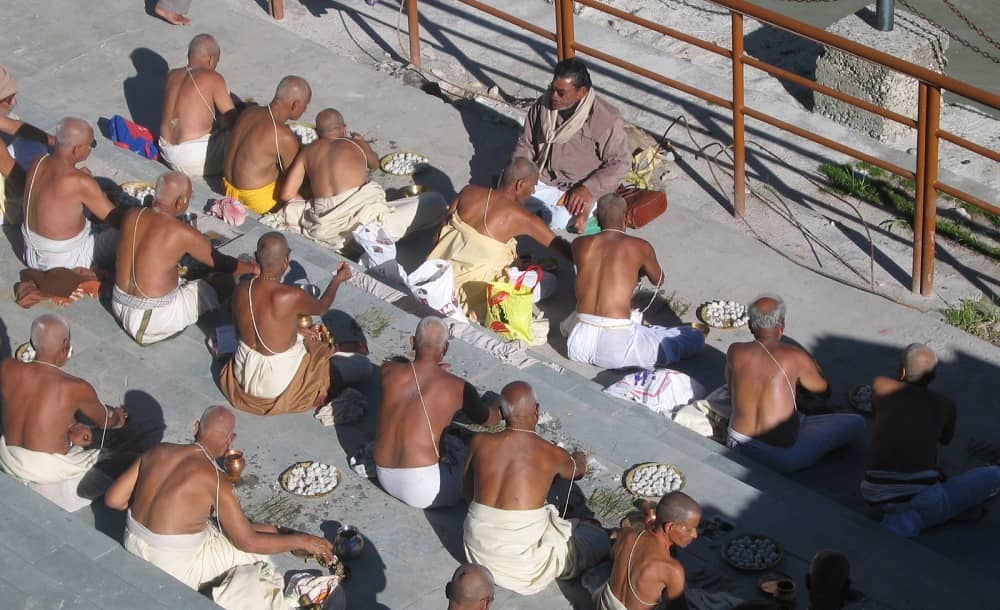
| Place Name | Description (Short Summary) | Distance from Badrinath Temple |
|---|---|---|
| Brahma Kapal | Located on the banks of the Alaknanda River, an important site for Hindu rituals and ancestral offerings. | 0.5 km / 4 mins |
| Sheshnetra | A sacred boulder believed to bear the impression of Sheshnag’s eye, located a few km from Badrinath. | 0.23 km / 4 mins |
| Panch Dhara | A group of five sacred water streams that originate from Badrinath. | 1 km / 15 mins |
Badrinath Uttarakhand India Badrinath Uttarakhand India Badrinath Uttarakhand India Badrinath Uttarakhand India Badrinath Uttarakhand India Badrinath Uttarakhand India Badrinath Uttarakhand India Badrinath Uttarakhand India Badrinath Uttarakhand India Badrinath Uttarakhand India Badrinath Uttarakhand India Badrinath Uttarakhand India Badrinath Uttarakhand India Badrinath Uttarakhand India Badrinath Uttarakhand India


